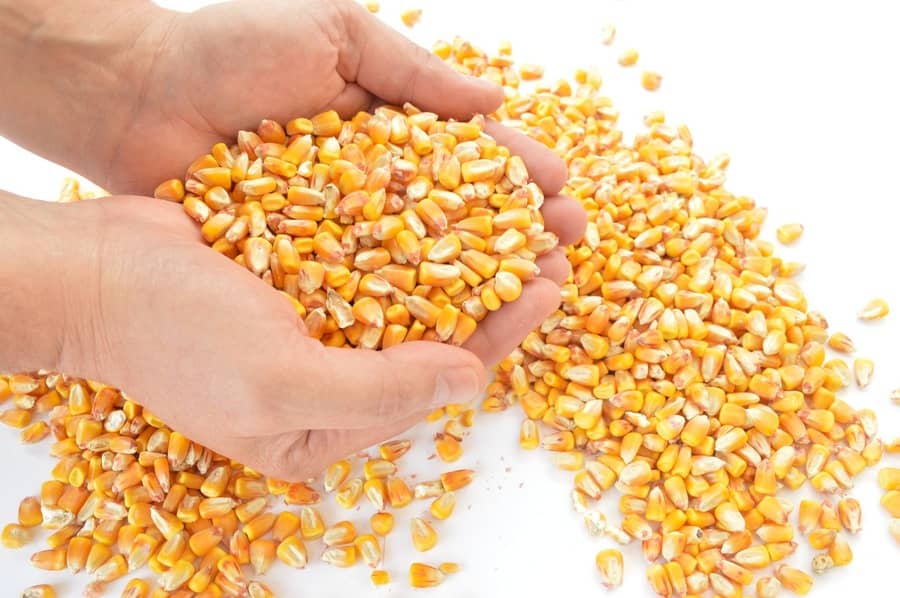Porto Alegre, August 9, 2022 – As we always warn the market in our newsletters, in August the corn market has important climate variables that define the productivity potential of the US crop. On the next 12th, USDA will release the update on the monthly supply and demand, but with the detail of being the first update on productivity potential with the effective view from the field. It is also a month of several private crop assessments, including the Pro Farmer crop tour, which often generates some volatility and/or expectations for the crop and prices. At the same time, there will also be two important updates: cuts in the European crop due to regional drought and the increase in Ukraine’s 2022/23 export target.
Weather maps continued to show a very hot August across the Midwest with regionally spottier rainfall. Models continue to confirm very good rainfall in the east of the Midwest and below average in the west. In the south and southwest of the Midwest, crops show there was a lack of moisture for the grains to be filled up. However, in other regions, in most crops pollination seems to have occurred normally and pod-filling has progressed well.
Now, it is a matter of some final rains in August to improve grain weight and final yield. This week, on the 12th, USDA will update its monthly US supply and demand picture as usual. The fundamental information of this report, as in every year, is the expected productivity update. So far, the Department analyst has kept the productivity expectation at the level of 177 bushels/acre, that is, the record set in 2021 even with the severe drought that hit Iowa and the northern Corn Belt last year. The states with the greatest influence on the total crop, such as Iowa, Illinois, Indiana, Ohio, Minnesota and Wisconsin, show crops with regularity for good yield potential.
The market version is expected to be released early this week. Most private companies seem to suggest potentials below 177 bushels per acre, with some companies with satellite monitoring indicating levels above. Crop conditions, released weekly by the USDA, are not a direct indication of this productivity potential, they only point to signs that there are potential regional problems. Of course, a number above expectations will be considered bearish for the CBOT, and a much lower number could bring a version of support at the high level of USD 6.00/bushel.
The other two key pieces of information for this report are on the European side. The first one reveals a change in expectations with the operation, so far, of the Ukrainian export corridor. Nearly three ships a day are being loaded with several local commodities, including fertilizers, corn and wheat. In its latest report, USDA projected only 9 million tons for corn exports from Ukraine in the 22/23 business year, against 23 million tons in the 21/22 business year, not least because there was no recent projected agreement. Now, it seems plausible that this projection will be updated to at least 15 million tons with the export corridor. This is a move, therefore, that could supply part of the Middle East again and even lead China to resume purchases from Ukraine if necessary.
The other fundamental information is related to the corn crop of some European countries. Portugal, Spain, Germany and now France suffer from adverse weather for corn, and there might be production cuts in this USDA report. France is the largest regional corn producer, followed by countries of the East. However, the little use of transgenics and the cultivation of many organic crops make the French plantations more susceptible to these bad weather conditions. As France supplies Portugal, Spain and Holland, it seems natural that these countries may have to resort to more imports this year. France will protect its corn for its own supply. Thus, Argentina, Brazil, Eastern European countries, and even the United States will be on the importation route from part of Europe.
By the way, high premiums, above USD 1/bushel for Brazilian corn, already reflect the demand from Europe, as well as from Asia (except for China), the Caribbean, and Colombia. Argentina has high export registrations at 36 million tons, so it will still be able to keep the supply in one of these countries. After that, demand is concentrated in Brazil, the United States, and Eastern Europe. For Brazil, this European picture is already priced, that is, the premiums are already high, and demand is already confirmed in the weekly shipments registered at ports, with a great share for Spain, Holland, and Portugal.
Follow the Safras Agency on our website. Also follow us on our Instagram, Twitter and SAFRAS TV and stay on top of the main agribusiness news!
Copyright 2022 – SAFRAS Latam

